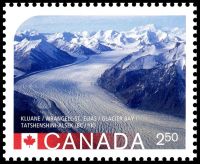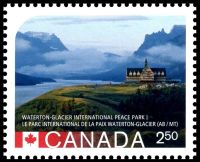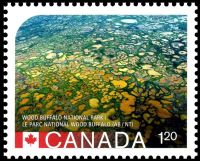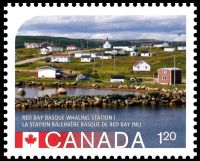Canada 2015 "UNESCO World Heritage Sites" (mint)
| <prev | back to index | next> |
| Issue Date | 21.08.2015 |
| ID | Michel: Stanley Gibbons: UPU: Category: pR |
| Author | Lara Minja, Lime Design |
| Stamps in set | 5 |
| Value |
CAD 1.20 - Dinosaur Park in Alberta - wrong image CAD 1.20 - Red Bay Basque Whaling Station in Newfoundland and Labrador CAD 1.20 - Wood Buffalo National Park in Alberta and Northwest Territories CAD 2.50 - Kluane/Wrangell-St.Elias/Glacier Bay/Tatshenshini-Alsek Parks in Yukon CAD 2.50 - Alaska and Waterton-Glacier International Peace Park in Alberta and Montana |
| Size (width x height) | Stamp measures 23.25 mm x 20.25 mm; Minisheet 130 x 71mm |
| Layout | mini sheet of 5 stamps |
| Products | FDC x 1 MS x1 PC x5 |
| Paper | |
| Perforation | |
| Print Technique | Lithography in 5 colours |
| Printed by | Canadian Bank Note |
| Quantity | 140,000 |
| Issuing Authority | Canada Post |
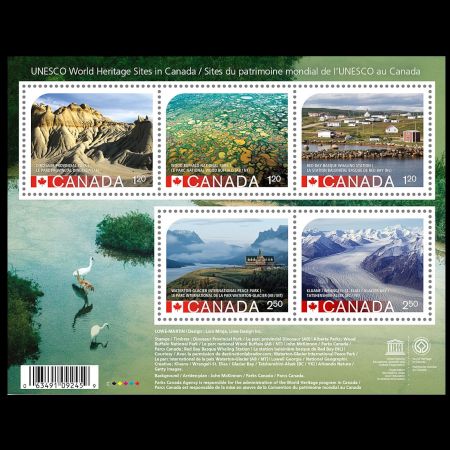
On August 21, Canada Post has issued a replacement stamp featuring the UNESCO World Heritage site of Dinosaur Provincial Park, which was created with the assistance of the park’s officials. The previous stamp and related collectibles issued July 3 were pulled from sale, on July 7, due to an incorrect photograph of the park. New collectibles in this UNESCO series have also been reissued.
The new stamp, with a correct picture is:
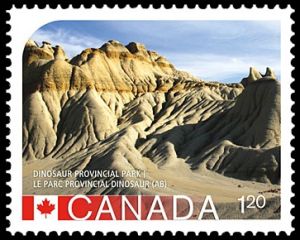
Dinosaur Provincial Park, in the badlands of southeastern Alberta, contains some of the most important fossil discoveries of more than 40 dinosaur species dating back to the Late Cretaceous Period, 75 million years ago. |
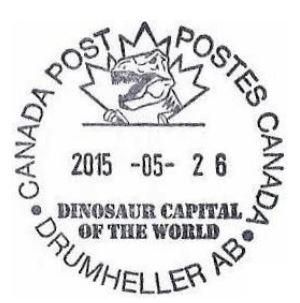
The museum is a Canadian tourist attraction and a centre of palaeontological research noted for its collection of more than 130,000 fossils and located only 6 kilometers away from Drumheller city.
During the late Cretaceous period, 75 million years ago, the landscape was very different. The climate was subtropical, with lush forests covering a coastal plain. Rivers flowed east, across the plain into the Bearpaw warm inland sea. The low swampy country was home to a variety of animals, including dinosaurs. The conditions were also perfect for the preservation of their bones as fossils. Between 1979 and 1991, a total of 23,347 fossil specimens were collected, including 300 dinosaur skeletons.
About 6% of the park is occupied by significant and, for the most part, undisturbed riparian habitat shaped by the meandering channel of the Red Deer River and characterized by point bars, wide terraces, fans and cut banks.
The river terraces support lush and diverse vegetation in various successional stages, ranging from pioneer willow stands to structurally complex plains, cottonwood forest, tall shrub thickets, ephemeral wetlands and dense sagebrush flats. Plains cottonwood riparian communities are among the most threatened habitats in semi-arid regions. The 'badlands' provide habitat for a number of ecologically specialized plant species and are characterized by open vegetation dominated by plants of the genus Artemisia and the family Chenopodiaceae. Remnant and recently created grasslands occur on buttes and large pediments.
Another four stamps shows the following sites:
Products
| FDC | Post Card |
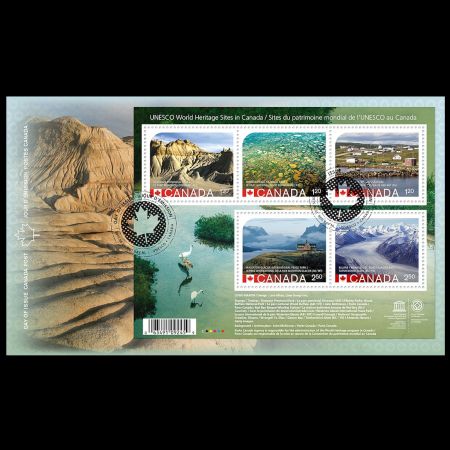 |
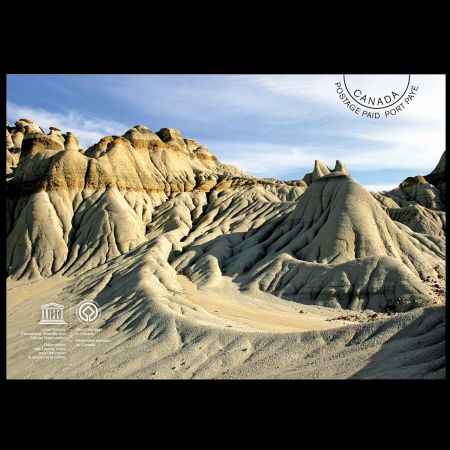 |
References
Canada Post, Philately news, UNESCO (multi language website)| <prev | back to index | next> |
